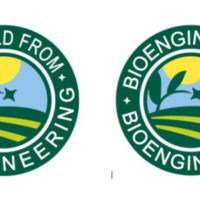![]() The advice awaited me in my inbox Monday morning.
The advice awaited me in my inbox Monday morning.
“Use fat-free or low-fat evaporated milk in place of cream in coffee and tea for a smooth taste, more calcium, and little or no fat.” Low fat evaporated milk? I thought. Why would anyone recommend evaporated milk for healthy eating?
The email was one of a series of suggestions sent to me by my “Super Tracker Coach,” a service offered as part of the USDA’s free “Super Tracker” that allows users to assess their diet and nutrition based on the new government My Plate recommendations, released last June.
And while there are clearly issues with many aspects of the Super Tracker including the recommendations upon which they are based, the project is a step in the right direction toward bringing more, and better, data to the American public about the food they eat. Data the USDA has also made available to other nutrition sites through data.gov.
Like the previous iterations of USDA run nutrition sites, ChooseMyPlate.gov is extremely popular, logging 23 million visits since its launch on December 22nd, says Dr. Robert Post, Deputy Director of the USDA’s Center for Nutrition Policy and Promotion. The Super Tracker alone now has 700,000 registered users tracking their diets and exercise.
![]() “We think the number of dedicated users is just amazing,” says Post. “We basically started from scratch with the My Plate icon and all communication around it, and now have millions of visitors. Just last week we saw 23,000 new users come to the site.”
“We think the number of dedicated users is just amazing,” says Post. “We basically started from scratch with the My Plate icon and all communication around it, and now have millions of visitors. Just last week we saw 23,000 new users come to the site.”
Users are likely attracted to the tool’s many features: a food tracker, a physical activity tracker, a weight manager, a “food-a-pedia,” and a “my reports” section that takes the information entered and turns it into charts and graphs.
But the real show stopper is the quality of the data. Every one of the 9,000 food items in its database has been analyzed for its nutritional content by the USDA, explains Post. “If it says “burrito with whole wheat tortilla,” we did the calculation to know exactly how much whole grain is in it,” says Post. “That is very different than most databases that rely on the nutritional facts on product packages. It is more expensive to get robust data from chemical analysis, but the USDA is interested in having the best data there is.”
Even with robust data, the selection of foods and the semantics used are odd. A search for “hamburger,” for example, yields eight listings, but almost all are brand names (White Castle, Wendy’s, Jack in the Box, etc), a trend Post says the public increasingly demands. To find data on my home cooked hamburger “ground beef” is the appropriate term says Post, a description I would have never thought of trying.
And because the recommendations are centered around the My Plate icon, all suggestions emphasize a low fat, dairy full diet (“if you are lactose intolerant, drink smaller amounts of milk at a time”) with plenty of grains (even if all I am eating white bread).
Marion Nestle author of “Food Politics,” “What to Eat,” and the forthcoming “Why Calories Count: From Science to Politics,” reminds me this is because creating a single icon to dictate the nutritional needs of millions of people is inherently challenging, if not impossible.
“Have some pity for the USDA. It’s primary responsibility is to promote U.S. agricultural products (“eat more!”) and it is hardly the right agency to be advising the public to eat less and eat better. Even so, providing a graphic that deals with the nuances of dietary patterns is really tough. The basic principles of healthful diets are, boring as they may be, balance, variety, and moderation. The healthiest diets are those that contain a wide variety of real (relatively unprocessed) foods of all types in amounts that do not exceed calorie needs. Humans have discovered endlessly varied ways of achieving healthy eating patterns and one graphic can barely get at that level of complexity. If you eat a wide variety of unprocessed foods, you don’t need to worry about anything nutritional except moderation. The nutrients get covered.”
In other words, maybe the Super Tracker is not designed for me. Perhaps my household – one in which we cook, garden and eat unprocessed food – is not, and should not, be the target of a government project designed to bring basic dietary concepts to the public.
While Nestle and others rightly question the science and motives behind My Plate, the comparatively measly $2 million spent on consumer research, curriculum guides, websites, communication strategies, and the icon design, may be some of the best money spent if it can actually inspire better eating and lower health care costs.
The Super Tracker is also certainly not the last, or only, word in nutrition. In addition to the numerous new nutritional tools out there, like the Self Nutrition Data and Massive Health’s Eatery, Post says the USDA shares the high quality data with those creating nutritional tools and apps. “The Administration supports open government and sharing data—that is why the Administration created data.gov.”
[A clarification by Robert Post on the database, updated in the article January 24, 2012] “In the past, the Center for Nutrition Policy and Promotion at USDA shared the foods database that supports its e-tools to be used by anyone. Like the previous Apps for Healthy Kids Challenge, CNPP has put its data and programming code at the data.gov website, like other agencies, to support programs that promote consumer wellbeing, e.g., apps that put the Dietary Guidelines for Americans into action for kids.”
The USDA is also looking to the private sector for more high quality data to add to its database – particularly data on ethnic foods.
For more information on how to partner with the USDA, leave requests below in the comments section and Food+Tech Connect will get in touch with contact information.





